Even though koi are freshwater fish, they can benefit from adding salt to their pond water.
Small amounts of dissolved sea salt can help support koi fish health and prevent illness and infection from spreading through your pond.
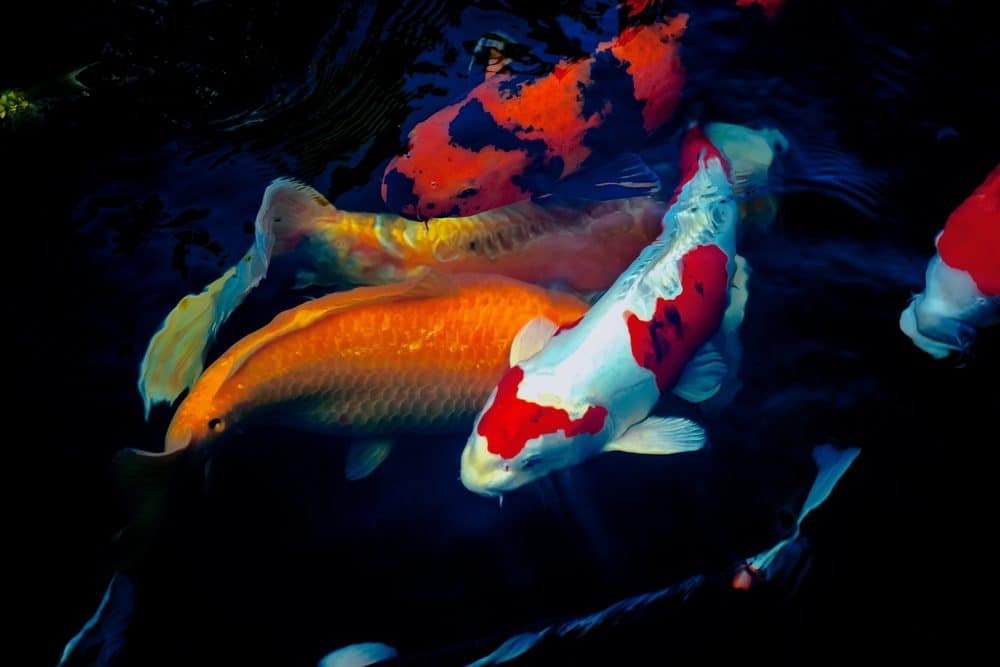
I’ve found that regularly adding salt to the koi pond makes a world of difference for my fish. However, it’s essential to be careful about your koi pond salt dosage. Too much pond salt can end up doing more harm than good.
Read on to find out more about why you should be using pond salt for koi, how it will affect your aquatic ecosystem, and how to reach the perfect salinity level for your pond.
Using pond salt regularly can help to support a healthy koi population in your pond. It not only kills bacteria and parasites in the water but helps pond fish to build up a slime coat to protect against remaining threats.
A small amount of pond salt also helps to improve respiration and gill function in fish. It blocks the absorption of harmful toxins such as nitrites while encouraging healthy oxygen intake.
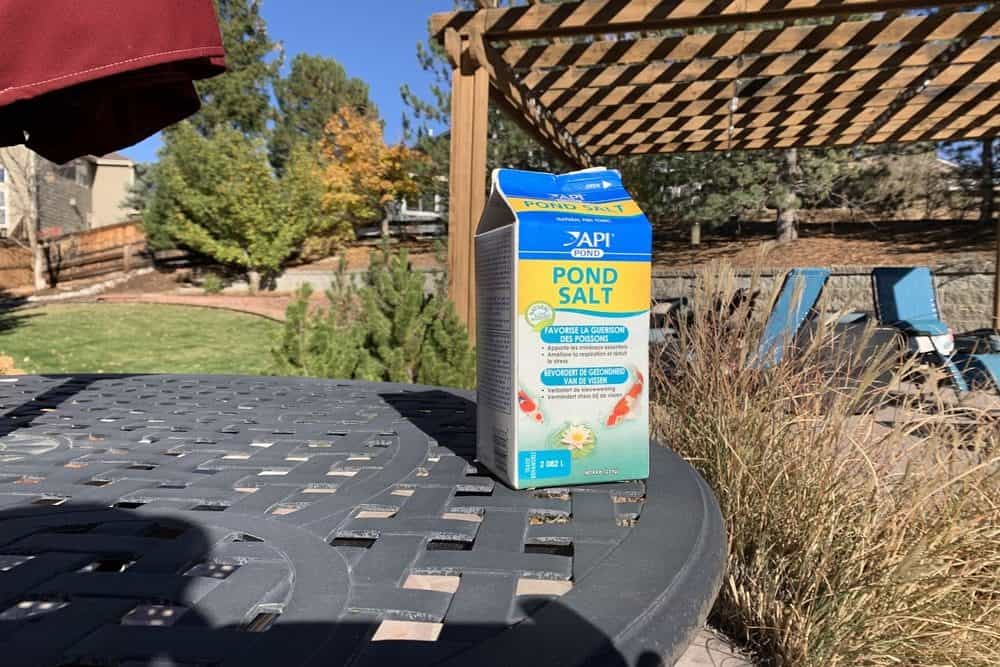
Adding salt to your pond also introduces electrolytes into the water. As with humans, electrolytes support a healthy lifestyle by aiding in energy production, organ function, and overall wellness.
While low levels of salt in a koi pond can be beneficial to your fish, adding too much may do more harm than good. It’s important to calculate the correct koi pond salt level ppm for your pond to avoid any accidental harm to your fish.
Adding non iodized salt to your koi pond is easy, affordable, and effective. Simply take a bucket of pond water and add the appropriate amount of salt for your setup, waiting for everything to dissolve completely before treatment. Doing this ensures you don’t accidentally burn your fish.
Carefully pour the salt solution into your main pond, aiming for a slow, even distribution. You may want to add the salt solution over the course of a few days for more gentle treatment.
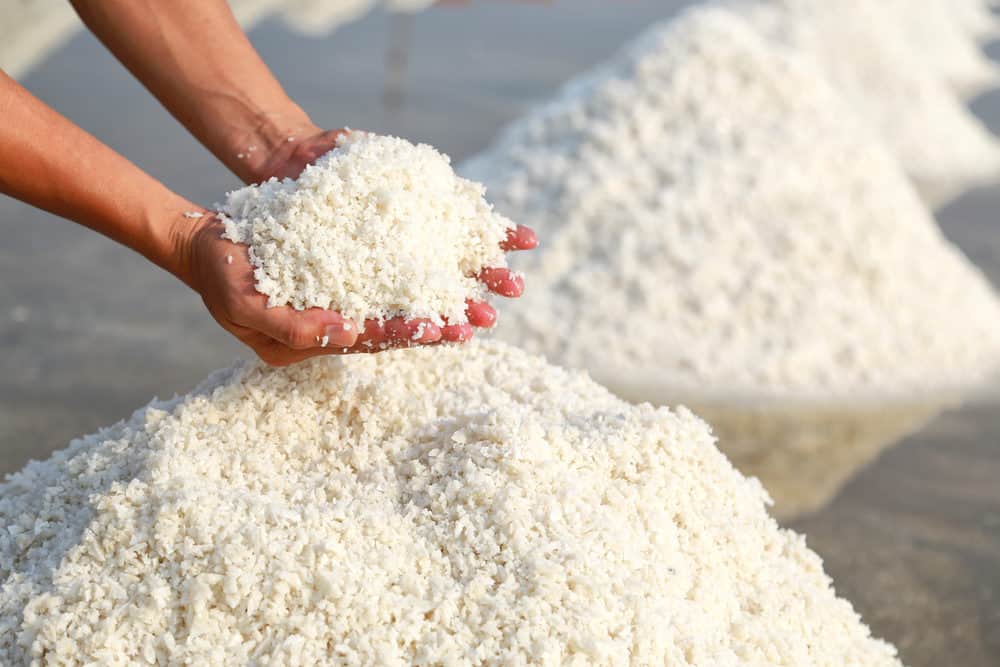
If possible, remove all aquatic foliage before treating your pond with a salt solution. Plants are more sensitive to salt concentration than fish, and only the hardiest species can survive a salt bath treatment.
You may also want to clean before adding salt to a koi pond. Scrubbing away scum from the sides and bottom of your setup can help you to avoid any unwanted salt buildup that may burn your koi fish.
Many people wonder how much salt in a koi pond is needed to reach the right salinity level. How much salt you add will depend primarily on the size of your pond, though you may also need to take local plant life into account.
Most koi owners aim to keep water at around 0.3% salinity when treating their fish. However, this can be too harsh for sensitive plant life. Healthy fish can benefit from just a low koi pond salt level of 0.1% salinity, which won’t kill hardy plant life such as zebra rush or cattails.
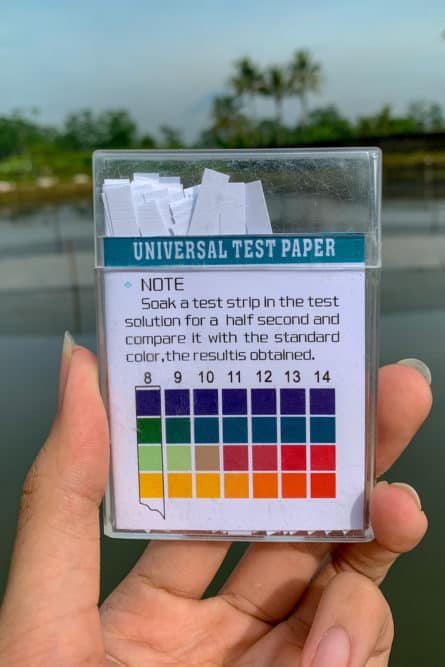
Using a koi pond salt calculator can help you to determine exactly how much salt you should add to your setup for the best results.
When in doubt, you can accurately test salt levels by using a koi pond salt meter. It will give you an immediate digital reading of koi pond salinity to let you know that your fish are safe and won't be subjected to nitrite toxicity.
The best salt for a koi pond is table salt, also known as sea salt or sodium chloride. It won’t react with water or affect pH levels, so you can safely add it to your pond without disrupting the delicate ecosystem.
You should avoid iodized products when salting koi pond setups. While iodine is healthy in small amounts, too much may disrupt the thyroid gland in fish. Instead, you should salt the koi pond with non-iodized or specialized aquarium salts.
Chemically, salts contain charged ions that experience a strong enough attraction to form a crystalline structure. In the case of table salt, sodium and chlorine molecules combine to form sodium chloride.
When you dissolve salt in water, it breaks back down into separate ions. This process happens because water molecules are polarized. Charged ions are more attracted to the positive and negative poles of water molecules than to each other.
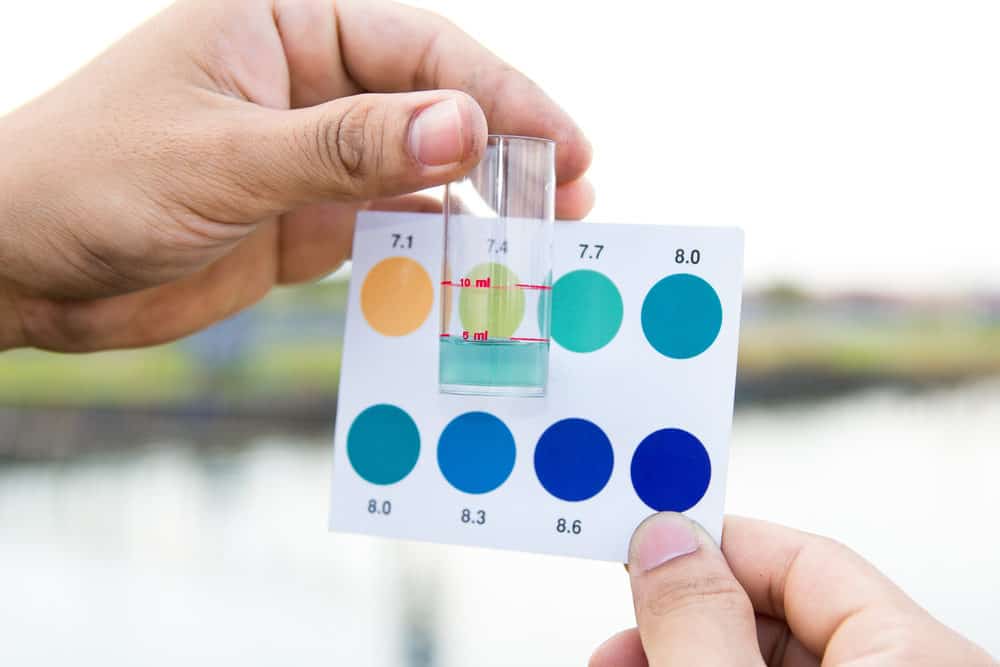
Even though table salt dissolves in water, it doesn’t react with it. When you add koi pond salt to your setup, the only change you’re making is to the total water volume.
To change pH, there needs to be a chemical reaction that involves donating hydrogen molecules to water. Sea salt doesn't contain free hydrogens and only donates ions such as sodium and chloride, so adding salt to koi pond doesn’t affect acidity levels.
Specialized acid and alkaline salts, on the other hand, can affect the pH of water. Unlike plain table salt, acid salts release free hydrogens into solutions, while alkaline salts release hydroxide ions. However, acid and alkaline salts may be too harsh for your fish.
You can find chemical solutions designed to help raise and lower pond pH, but these can also wreak havoc on your fish. Instead, it’s best to opt for a gentle, natural solution to keep your underwater ecosystem safe.
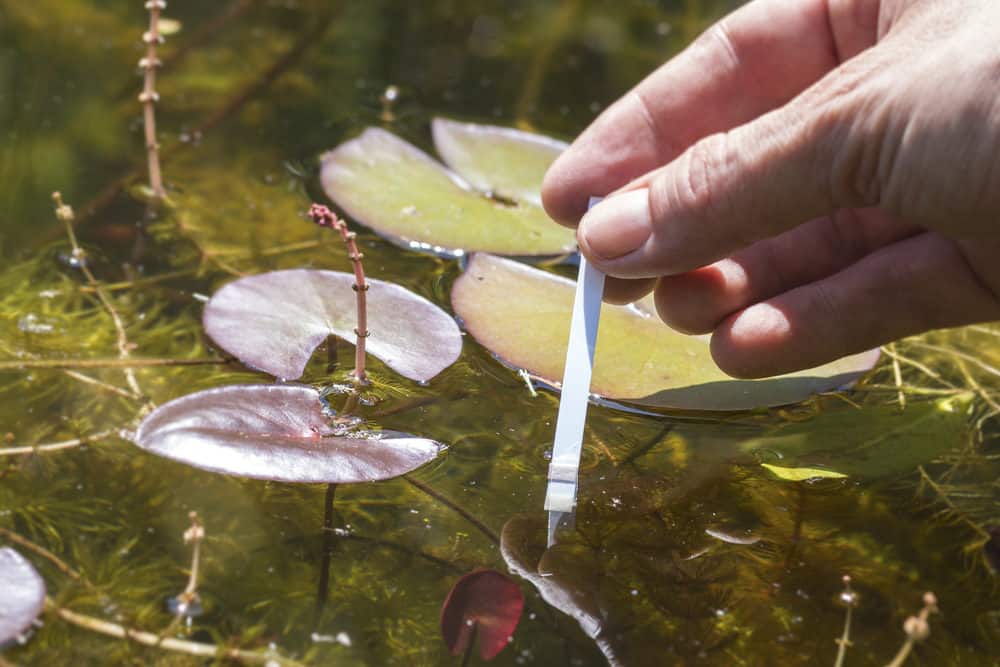
Koi fish prefer a neutral pH of between 6.5 and 8.5. Use a pH strip to test your pond water and see if it lies within the correct range.
If the pH of your pond is high, the water is too basic for your koi fish. You can add a compound such as white vinegar that will safely donate hydrogen ions to lower the pH.
If the pH of your water is low, it means that your pond may be too acidic for fish and plant life. You can raise pH and neutralize water by adding substances such as baking soda, limestone, or crushed eggshells.



